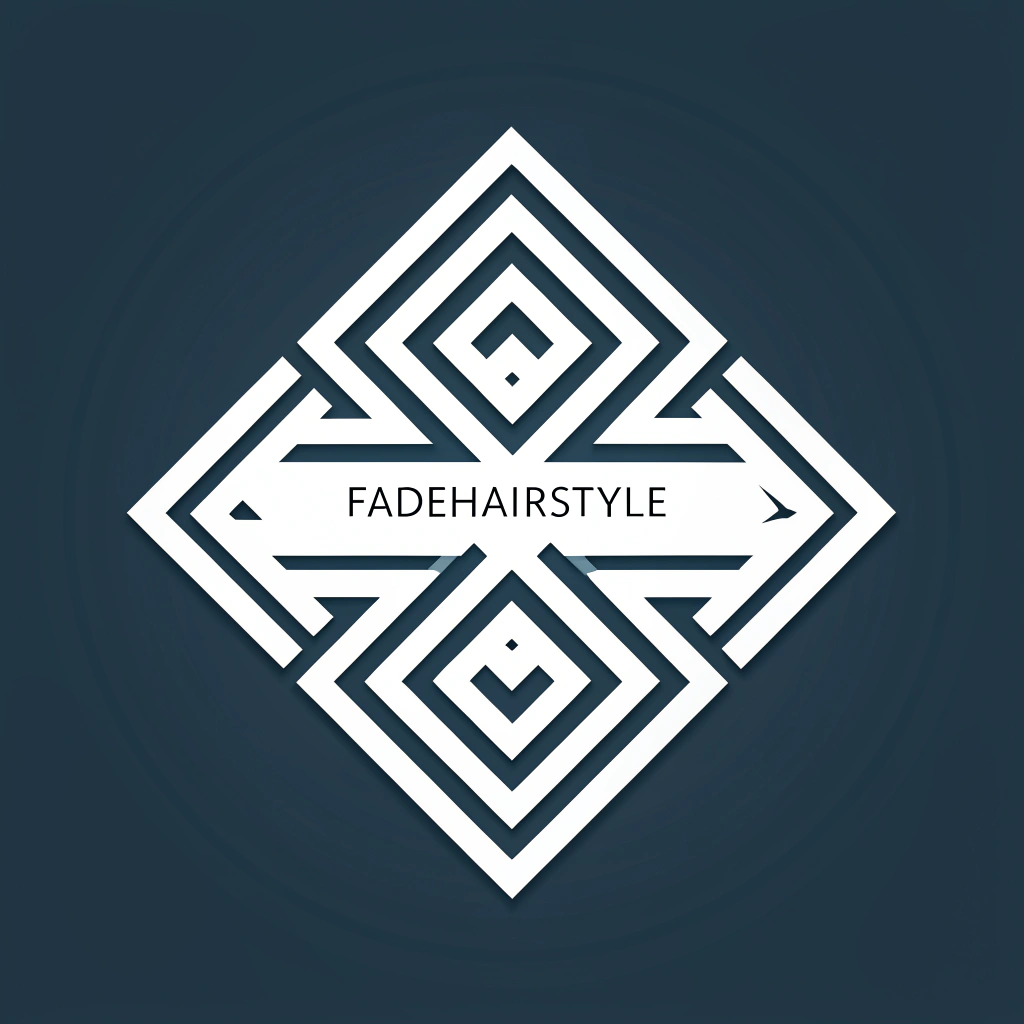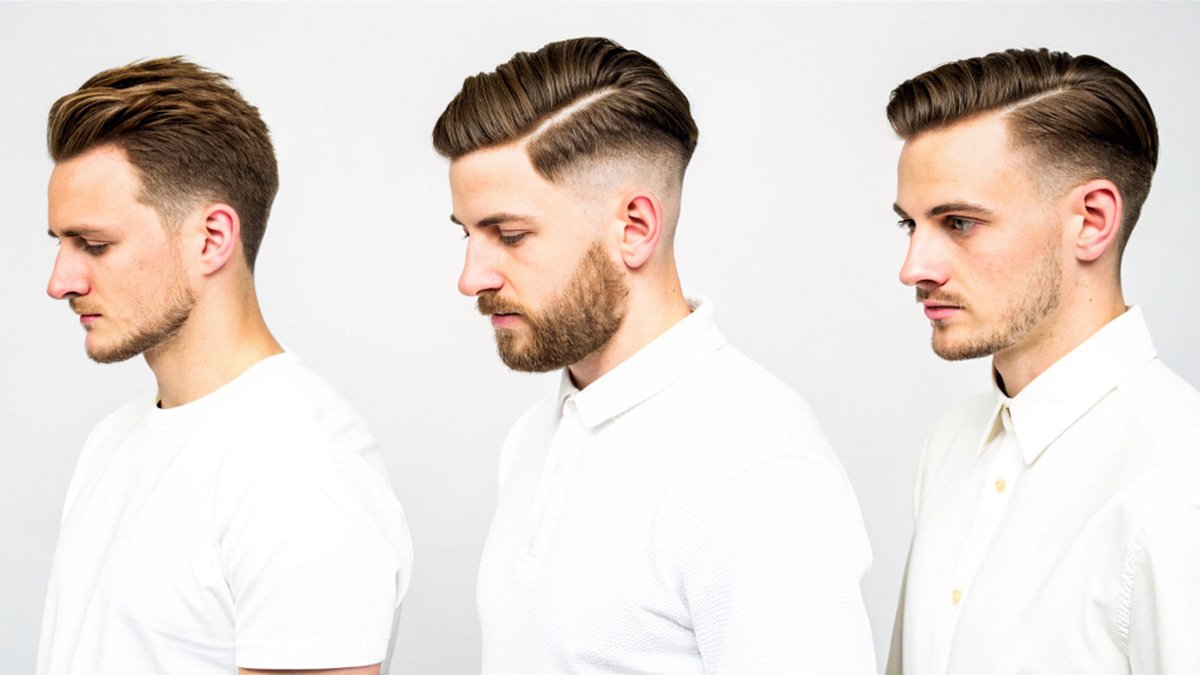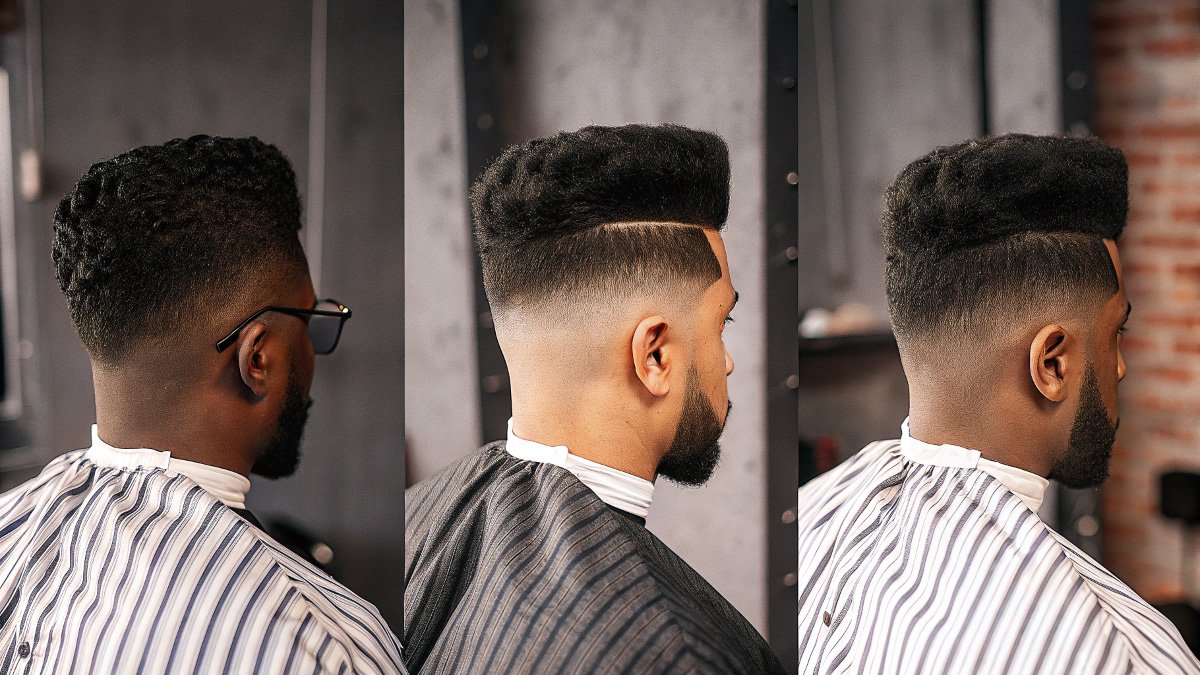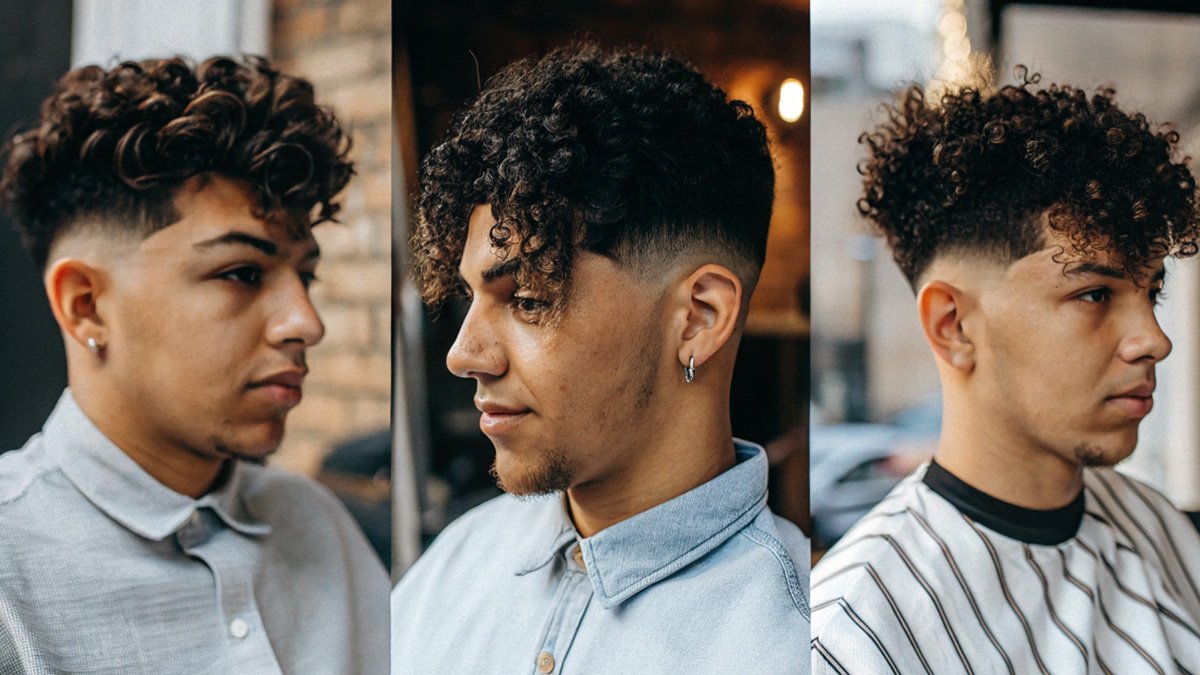Men’s grooming has shifted dramatically in recent years. Clean lines and precise cuts have replaced outdated styles. The drop fade represents this evolution perfectly. This cut combines technical skill with modern aesthetics.
Professional barbers recognize the drop fade as one of the most requested styles. Celebrities, athletes, and style-conscious men choose this cut consistently. The popularity stems from its versatility and clean appearance. Social media has amplified its reach across all demographics.
This haircut works across different hair textures and face shapes. The curved fade line creates visual interest without being overly complicated. Men appreciate how it maintains professionalism while adding contemporary flair. The style bridges the gap between conservative and trendy.
Understanding the Drop Fade Structure
The drop fade follows your head’s natural contours. The fade line curves downward behind each ear. This creates an arch-like pattern that differs from straight fades. The curve adds dimension and movement to your profile.
Hair length gradually decreases along this curved path. The transition happens smoothly without harsh lines. Skilled barbers blend different guard sizes to achieve seamless gradations. The result appears natural while maintaining precise definition.
The curved pattern serves multiple purposes. It frames your face differently than traditional cuts. The shape can elongate or balance facial features. The curve also affects how the haircut grows out over time.
Key Elements of Drop Fade Architecture
Three main components define this style. The fade line establishes the curved pattern. The blend zone creates smooth transitions. The top section maintains length and texture.
The fade line starts at your temple area. It curves downward as it moves toward the back of your head. The lowest point usually sits behind your ear. This creates the characteristic “drop” that names the style.
Blend zones require technical precision. Multiple guard sizes create gradual length changes. The transitions must appear seamless from all angles. Poor blending results in visible lines that ruin the effect.
Drop Fade Variations and Heights
High Drop Fade Characteristics

High placements start near your temple level. This creates maximum contrast between top and sides. The dramatic curve draws attention upward. The style works exceptionally well with longer hair on top.
Men with round faces benefit from high placements. The upward emphasis elongates facial appearance. The contrast adds sophistication to classic cuts. Maintenance requirements increase with higher placements.
The growing-out process differs with high fades. You’ll notice changes within two weeks. Regular touch-ups maintain the sharp appearance. Budget for visits every 2-3 weeks.
Mid Drop Fade Benefits
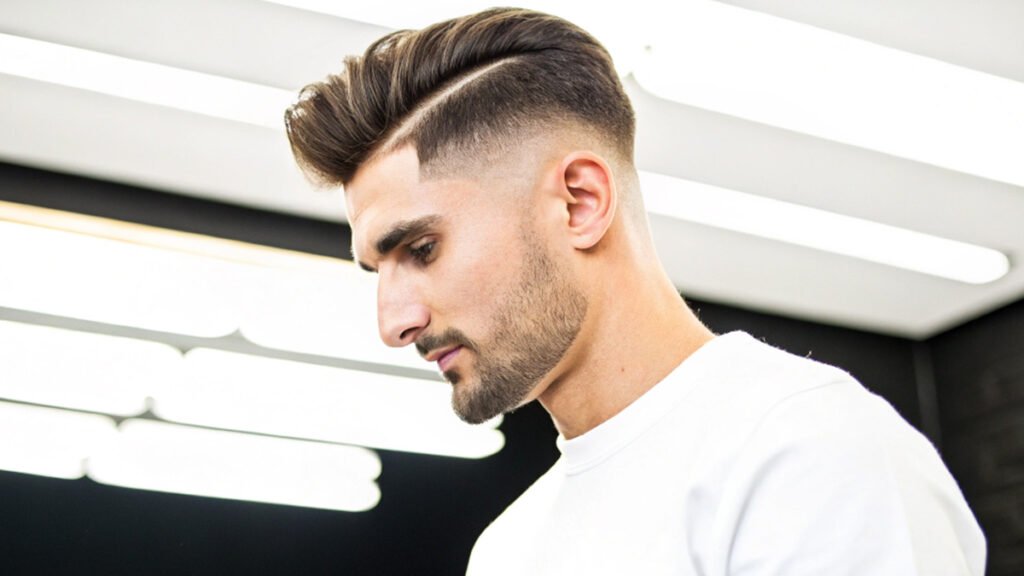
Middle placements offer optimal versatility. The fade begins around ear level. This creates balance between dramatic and subtle effects. Most face shapes work well with mid-level placement.
Professional environments accept mid-level fades easily. The style maintains conservative appeal while adding modern touches. Growing out appears more natural than higher placements. Maintenance schedules become more flexible.
Styling options expand with mid-level placement. You can emphasize the top or keep it understated. The fade provides structure without overwhelming other elements. This makes it ideal for experimenting with different looks.
Low Drop Fade Advantages

Conservative placements start just above ear level. The subtle curve adds detail without dramatic changes. Professional settings welcome this approach. The style works for men preferring minimal maintenance.
Low fades grow out gracefully. The natural appearance lasts longer between cuts. You can extend time between barber visits. Daily styling remains simple and straightforward.
This placement suits men with angular features. The soft curve balances sharp jawlines. The subtle nature maintains masculine appeal. Low fades work well with business dress codes.
Face Shape Compatibility Analysis
Round Face Optimization
Men with round faces should choose higher fade placements. The upward emphasis creates length illusion. Avoid wide styles that emphasize roundness. The curved line should point upward.
Keep top sections with adequate height. This draws eyes upward and elongates appearance. Avoid flat styles that increase width perception. The contrast between top and sides should be noticeable.
Side partings work exceptionally well with round faces. The asymmetry breaks up circular patterns. Choose defined parts over center placements. The fade should support the parting direction.
Square Face Enhancement
Square faces benefit from softer fade transitions. The curved line counters angular features. Mid to low placements work best. Avoid harsh contrasts that emphasize corners.
Textured tops soften overall appearance. The movement breaks up rigid lines. Avoid slicked-back styles that highlight angles. Natural texture provides balance.
The fade curve should follow your hairline naturally. Don’t force dramatic curves on square structures. Work with your natural patterns for best results.
Oval Face Flexibility
Oval faces work with any fade height. This shape provides maximum flexibility. You can experiment with different placements. Both subtle and dramatic approaches succeed.
Consider lifestyle factors over face shape restrictions. Professional requirements might influence height choice. Personal style preferences should guide decisions. Oval faces rarely look poor with drop fades.
Maintenance preferences become the primary consideration. Higher fades need more frequent touch-ups. Lower placements offer more flexibility. Choose based on your schedule and commitment level.
Long Face Considerations
Men with long faces should avoid excessive height on top. This prevents further elongation. Choose lower fade placements. The curve should be subtle rather than dramatic.
Width-adding techniques work well with long faces. Textured sides create volume illusion. Avoid completely shaved sides. Keep some length to add visual width.
Horizontal elements help balance length. Side parts create width impression. Avoid center parts that emphasize length. The fade should support horizontal styling.
Drop Fade Versus Alternative Styles
Drop Fade Compared to Skin Fade
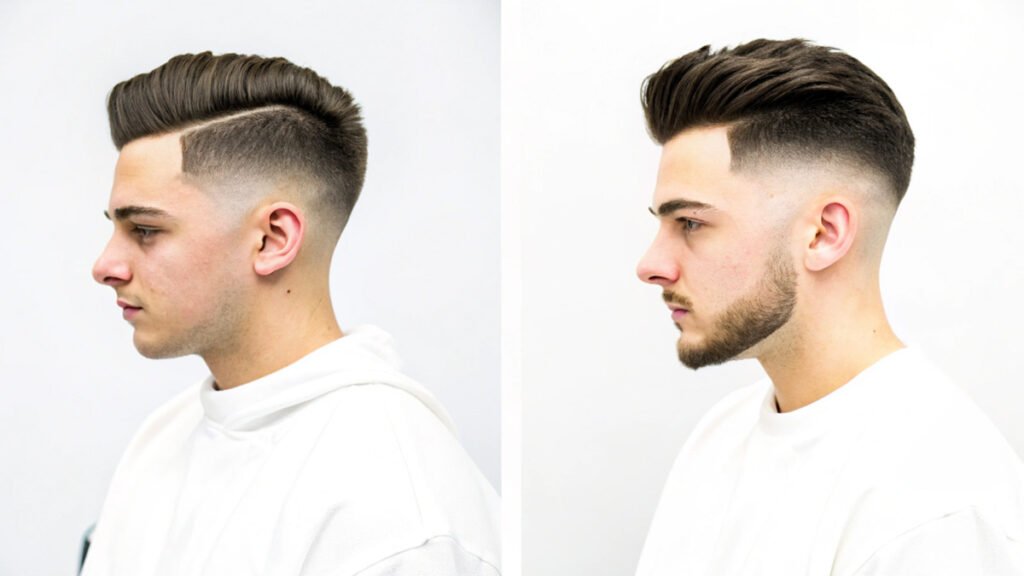
Skin fades remove hair completely at the bottom. Drop fades can maintain length throughout. The main difference lies in the final length, not the curve pattern. Both can incorporate the dropping technique.
Skin approaches create higher contrast. The bald sections stand out dramatically. Drop fades with length appear softer. Professional settings often prefer the softer approach.
Maintenance differs between these approaches. Skin sections require frequent touch-ups. Hair shows growth immediately on bald areas. Fades with length hide growth better.
Drop Fade Versus Burst Fade
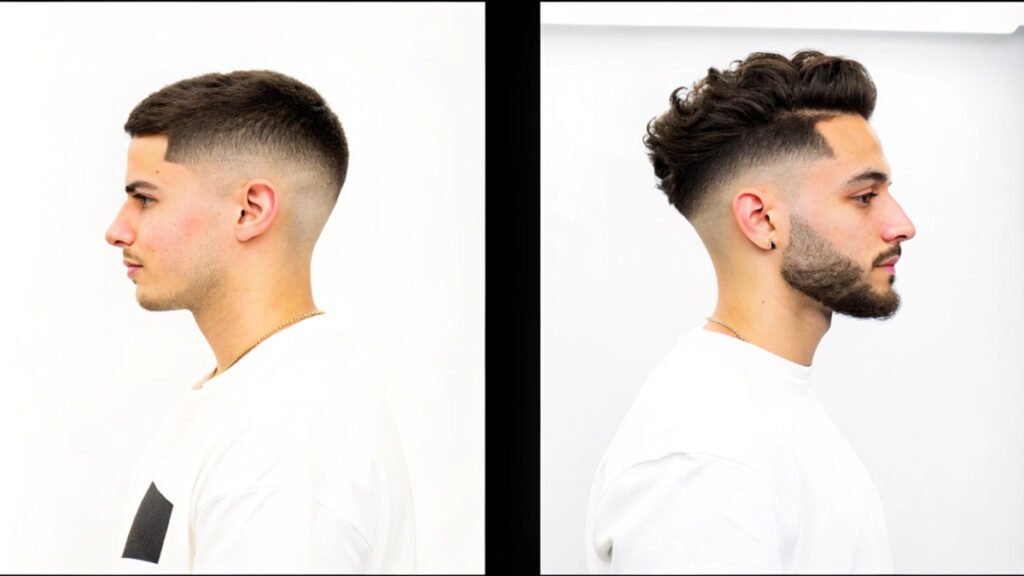
Burst fades create circular patterns around ears. Drop fades follow head contours naturally. Burst styles appear more dramatic and artistic. Drop fades maintain professional acceptability.
Burst patterns require advanced technical skills. Not all barbers execute them well. Drop fades use more standard techniques. Most experienced barbers handle them confidently.
Growing out differs significantly between styles. Burst patterns become obvious quickly. Drop fades maintain shape longer. Consider maintenance commitment before choosing.
Drop Fade Versus Taper Fade

Taper fades use scissors primarily. Drop fades typically use clippers. The tools create different textures and patterns. Taper approaches appear more natural.
Professional environments often prefer taper approaches. The natural appearance fits conservative dress codes. Drop fades add more contemporary styling. Choose based on workplace expectations.
Styling flexibility varies between approaches. Taper cuts offer more versatility. Drop fades provide structure and definition. Consider your daily styling preferences.
Popular Drop Fade Combinations
Textured Crop with Drop Fade

Modern crop cuts pair excellently with drop fades. The contrast creates visual interest. Short, textured tops work particularly well. The combination appears effortlessly stylish.
Styling requires minimal effort daily. Natural texture provides the main appeal. Products enhance rather than create the look. This makes morning routines simple.
Professional acceptance remains high with this combination. The crop appears business-appropriate. The fade adds contemporary touches. Most workplace dress codes accept this style.
Pompadour Drop Fade Integration

Classic pompadours gain modern appeal with drop fades. The curved sides complement the volume on top. Higher fade placements work best with pompadours. The contrast emphasizes the top section.
Styling requires more time and products. Daily maintenance increases significantly. Consider your morning routine before choosing. The results justify the extra effort for many men.
Formal occasions suit pompadour combinations well. The classic elements maintain sophistication. The modern fade adds contemporary relevance. This bridges traditional and current styles.
Buzz Cut Drop Fade
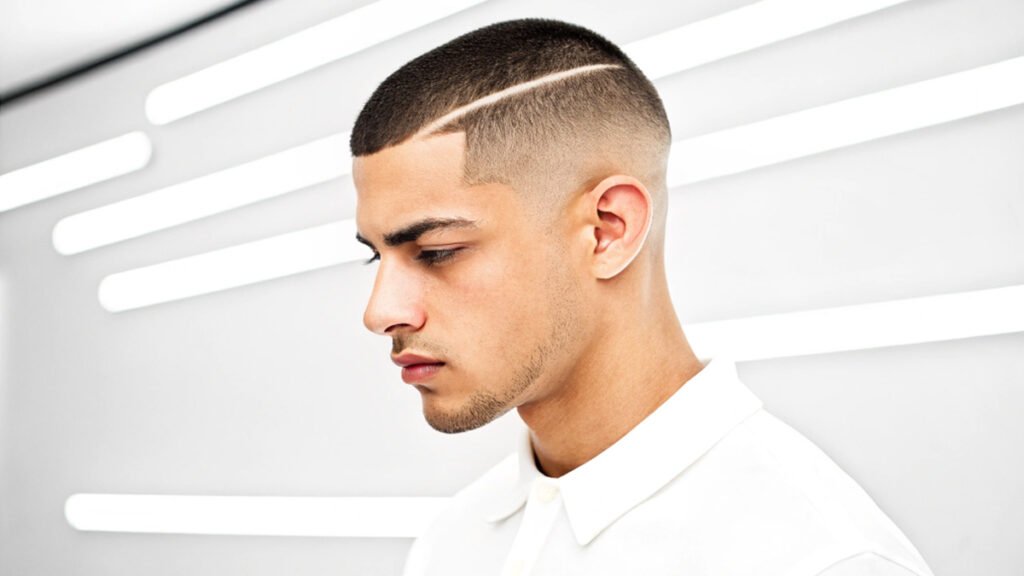
Ultra-short tops create striking combinations with drop fades. The contrast becomes the main visual element. This approach suits men preferring minimal styling. Maintenance focuses entirely on the fade.
Professional environments accept buzz combinations easily. The clean appearance fits most dress codes. Military and law enforcement often prefer this approach. The masculine appeal remains strong.
Growing out requires patience with buzz combinations. The top takes time to develop length. Plan transitions carefully if you want longer styles later. The fade maintains interest during growth phases.
Curly Hair Drop Fade Applications
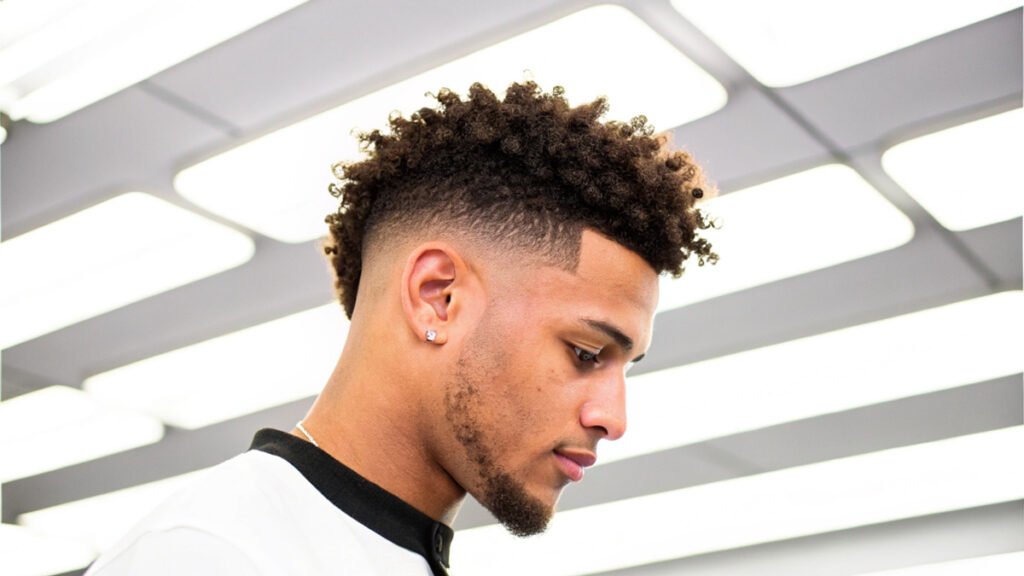
Natural curl patterns work excellently with drop fades. The contrast between textured tops and smooth sides creates appeal. Curl definition becomes more prominent. The fade provides clean structure.
Maintenance focuses on curl health and fade sharpness. Use products that enhance natural curl patterns. Regular trims keep both elements looking fresh. The combination requires specific care routines.
Different curl types need different approaches. Loose curls allow more fade height options. Tight curl patterns work better with lower placements. Consult with barbers experienced in textured hair.
Achieving the Perfect Drop Fade
Barber Selection Criteria
Choose barbers with demonstrated fade experience. Ask to see portfolio examples of their work. Social media profiles often showcase recent cuts. Read reviews focusing on fade quality.
Technical skill matters more than shop popularity. Some high-end shops employ inexperienced staff. Neighborhood barbers sometimes offer superior technical skills. Price doesn’t always indicate quality.
Schedule consultations before major changes. Discuss your lifestyle and maintenance preferences. Good barbers ask questions about your routine. They should offer honest advice about suitability.
Communication Strategies
Bring multiple photo examples of desired results. Pictures eliminate description confusion. Show examples from different angles. Include photos of styles you want to avoid.
Describe your daily styling routine honestly. Mention time constraints and product preferences. Discuss maintenance frequency expectations. This helps barbers create suitable cuts.
Ask questions throughout the cutting process. Understanding the techniques helps future maintenance. Request styling demonstrations before leaving. Learn product application methods.
Preparation and Aftercare
Arrive with clean, dry hair when possible. This allows accurate length assessment. Avoid heavy products that alter natural texture. Clean hair shows true growth patterns.
Schedule appointments when you have flexibility. Rushing leads to poor communication. Allow extra time for detailed consultations. Complex cuts require patience from both parties.
Follow aftercare instructions carefully. Use recommended products consistently. Schedule follow-up appointments as suggested. Proper care extends the cut’s lifespan.
Styling and Maintenance Protocols
Daily Styling Techniques
Start with slightly damp hair for best results. Towel-dry gently to avoid damage. Apply products evenly through hair. Focus on top sections while avoiding faded areas.
Use brushes and combs appropriate for your hair type. Natural bristle brushes work well for fine hair. Wider teeth combs suit thicker textures. Avoid damaging the fade with aggressive brushing.
Develop consistent morning routines. Practice makes styling faster and more effective. Keep necessary tools easily accessible. Streamlined routines prevent rushed results.
Product Selection Guidelines
Choose products based on desired finish and hold strength. Matte products create natural appearances. Glossy finishes suit formal occasions. Hold strength should match your activity level.
Hair type influences product choice significantly. Fine hair needs lighter formulations. Thick hair requires stronger hold products. Oily hair benefits from oil-free options.
Quality matters more than price with styling products. Professional brands often perform better. Read ingredient lists carefully. Avoid products with harsh chemicals.
Maintenance Scheduling
Track your fade’s growth pattern carefully. Most men need touch-ups every 2-4 weeks. Higher fades require more frequent maintenance. Individual hair growth rates vary significantly.
Schedule appointments in advance during busy seasons. Many barbers book weeks ahead. Regular appointments often receive priority booking. Consistency builds better relationships with barbers.
Budget for maintenance costs when choosing styles. Higher-maintenance cuts cost more annually. Factor in product costs alongside barber fees. Plan financially for style commitment.
Common Implementation Errors
Height Selection Mistakes
Choosing inappropriate fade heights for face shapes creates unflattering results. Round faces need height; long faces require width emphasis. Ignoring face shape leads to disappointment. Consider professional advice for optimal placement.
Lifestyle incompatibility causes maintenance problems. High fades demand frequent touch-ups. Busy schedules conflict with maintenance needs. Choose heights matching your availability.
Following trends without considering personal features rarely succeeds. Instagram photos don’t account for individual differences. Face shapes, hair types, and lifestyles all influence suitability. Personalized approaches work better than copying trends.
Communication Failures
Vague descriptions confuse barbers and clients. “Make it shorter” provides insufficient direction. Specific measurements and photo examples work better. Clear communication prevents disappointment.
Unrealistic expectations create dissatisfaction. Hair texture limits possible outcomes. Face shapes influence final appearance. Honest discussions about limitations prevent problems.
Ignoring professional advice often leads to poor results. Experienced barbers understand technical limitations. Their suggestions come from years of experience. Consider their input seriously.
Maintenance Neglect
Postponing touch-ups ruins the style’s impact. Fades lose definition quickly as hair grows. Sharp lines become blurred and unprofessional. Regular maintenance preserves the investment.
Using inappropriate products damages hair and appearance. Cheap products often contain harmful ingredients. Poor-quality tools create uneven results. Invest in proper maintenance supplies.
Inconsistent styling habits prevent optimal results. Daily care maintains the cut’s appearance. Neglecting routine styling reduces impact. Develop sustainable daily habits.
Professional Considerations and Workplace Acceptance
Corporate Environment Guidelines
Conservative workplaces often prefer subtle fade approaches. Lower placements maintain professional appearance. Avoid dramatic contrasts in formal settings. Classic combinations work better than trendy variations.
Industry standards vary significantly across fields. Creative industries accept more dramatic styles. Financial sectors prefer conservative approaches. Research your industry’s expectations before making changes.
Client-facing roles require additional consideration. Personal appearance reflects on company image. Choose styles that enhance rather than distract. Professional polish matters in these positions.
Style Longevity and Evolution
Drop fades have maintained popularity for over a decade. The style continues evolving with new variations. This suggests long-term viability for the investment. Classic approaches remain relevant longer.
Personal style evolution should influence choices. Young professionals might prefer different approaches than executives. Consider where your career path leads. Choose styles that can evolve with you.
Seasonal variations keep the style fresh. Summer allows for shorter, more dramatic approaches. Winter styling might emphasize longer tops. Adapt the style to your preferences throughout the year.
Conclusion
Drop fades represent modern barbering at its finest. The combination of technical skill and artistic vision creates exceptional results. Understanding the style’s components helps you make informed choices. Proper execution requires communication, skill, and maintenance commitment.
Success depends on choosing appropriate variations for your situation. Face shape, lifestyle, and professional requirements all influence optimal choices. Working with skilled barbers ensures better outcomes. Investment in quality pays dividends in appearance and confidence.
The style’s versatility ensures long-term satisfaction. Different combinations prevent monotony while maintaining the core appeal. Regular maintenance keeps the investment looking fresh. Proper care extends the style’s impact significantly.
Transform your grooming routine with this sophisticated approach. Schedule consultations with experienced barbers to explore possibilities. Document your preferences and maintenance capabilities honestly. The perfect drop fade awaits your discovery.
